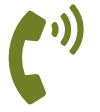Customer loyalty certainly motivates your customers to turn into brand loyalists which is ideal for business growth. It would be best if you had a well-planned strategy for incentivizing customers to drive more sales, improve retention, and build stronger relationships with customers.
To support the statement, let’s check some facts:
- Loyal customers spend more than others, and 61% of loyal customers go out of their way to buy from specific brands.
- 20% of loyal customers are typically responsible for 80% of a company’s revenue.
- Consumers with an emotional connection to a brand have a 306% higher lifetime value.
And the list is never-ending if you investigate more on the benefits of implementing a loyalty program customized for your business goals.
A customer loyalty program’s key attributes can turn one-time buyers into repeat customers and keep your brand on top of mind. It further improves the return on your marketing and sales budget.
Now, to win customer loyalty, you need to implement a tailor-made loyalty program software with unique features that can yield optimum results for your business growth.
Let explore how to do that.
1. A tailor-made Loyalty Program
When your loyalty program demonstrates that you care, it encourages your customers to share the quality experience you provide to them with their friends, loved ones, and colleagues.
The more personal the experience you offer to your users, the more likely they will share with the broader world around them.
Using your loyalty program to identify your customers’ preferences and favorite activities, and developing more of the same, is how you prove that these relationships matter the most.
- How responsive are your customers to email?
- How active are they on social media?
- When do they prefer to be contacted?
- Does offering a discount for 20% off on the anniversary of their first purchase affect their actions? What about on their birthday?
- When should the program forward a polite ‘thank you,’ and when should it trigger ad-hoc points for remaining active in the loyalty program?
These questions delve into the personal nature of your loyalty program’s relationship with your customers by placing it even more firmly into their lives.
Therefore, the customer loyalty program must possess a personal touch to inspire your customers to think of its experience, incentives, and rewards, whenever they want to refer your brand to their friends.
Making your loyalty program indeed personal involves the following three essential steps:
Empathize (with your customers’ experience)
Make every effort to walk in your customers’ shoes. Go through purchasing a product, joining the engagement program, contacting customer service, and any other touchpoints where your customers interact with your company. At each point, explore the different incentives and forms of encouragement that could deepen the relationship.
Ask (your best customers why they support you)
Think of your favorite customers and reach out to them to encourage an open discussion. Let them tell you what kind of encouragement they need. As the loyalty program grows, regularly send surveys to your top program users.
Respond (as your customers’ needs to evolve, so should your loyalty program)
Seek out ways of demonstrating that you listened and heard. If users offer a thoughtful perspective through a survey response, use them in your next promotional campaign. Thank your customers, perhaps publicly, and provide a small reward. Nearly every action your customers take should result in responses that recognize their contributions.
2. Create demand for your Loyalty Program
As we will continue to state: the users’ experience is the key. NextBee tries to improve the user experience at every possible interaction is how you continue to motivate your users to value your program.
NextBee’s personalized loyalty program is ready for deployment when it can demonstrate the following features and approaches:
- Memorable – You must always seek the details that can make a moment last. It is those personal touches that ever get noticed and embed themselves within our memories. They can occur during any and every interaction
- Pleasant – Each experience must encourage the next. It must all form a near-endless tapestry of positive interactions featuring favored products. When your products become embedded into your loyalty program users’ positive memories, they will share it at every chance they get
- Addictive – You want your users to spend more time with you, to use your product or service more often, and to increase the amount of effort they expend on behalf of your business. Make your program enjoyably habit-forming, and they will do all of these things and more
- Sharable – Make every tool available to your customers to make sharing as effortless as possible. Offer suggested content to share on their favorite social media sites. Offer in-site widgets for sharing without having to leave your site. Provide incentives that encourage specific actions within social media
Its primary objective is to increase sales, maintain user satisfaction, and improve new leads’ quality and quantity.
To gain the success you seek, you must also create an environment that makes your program memorable, pleasant, and sharable. It is how your goals will be achieved.
3. Making the Loyalty Program Adaptive in nature
Within the overall loyalty program’s architecture, you must adopt it at a personal level. Adaptation should be an integral part of the approach for the loyalty program to be successful.
It should be seen as the primary aspect of the loyalty program features while expressing the following characteristics:
Implementing Change (exactly when needed)
An adaptive loyalty program gives you the insight needed to know when to move, where to go, and how customers prefer to be engaged. Ensure that the loyalty program remains relevant for the long-term. They are keeping the program creative and adaptive by developing a framework of best practices.
Be flexible. As the customers interact with the loyalty program, elements should change and evolve to meet their needs. The acceptance and use of engagement activities and rewards should analyze patterns or preferences.
Simultaneously, it should be understood that a meaningful reward for a new customer is different from for someone with a much longer relationship.
Refresh (your approach to engaging your customers)
Aggressively schedule program updates. If an initial test of a new message, incentive, or reward on a particular segment demonstrates a high potential for success, quickly implement it across the entire program.
Encourage all program stakeholders to pursue ways of reducing friction and increasing engagement. Regular updates and adjustments should continually fine-tune the program’s approach to the customers.
The more you use the loyalty program to react to your customers’ needs and wants, the greater their loyalty and willingness to act.
4. Best Practices to keep the Loyalty Program entirely in control
Observing how your customers interact with the loyalty program and creating guidelines for using relevant program activity data requires the program’s complete integrity, including customer information and data security.
Following industry-standard security protocols and exceeding best practices guarantee that you will make program decisions based on accurate data while assuring your customers that you value their information and protect it.
Developing and use a guideline to maintain program control. Those guidelines should, in general, follow three essential tenets:
Map the journey of your best user
Know the path you want your customers to take. Sketch out how they join the loyalty program, what they do first, what they do next, how long you expect it to take to gain the first reward and more. Create special incentives for each interaction, and know that not every business requires one.
Plan so you’re ready when it’s time to re-engage
A controlled response is always a well-prepared one. Familiarity breeds acceptance, and success leads to even more support. It is easy to find fans of a sports team when the team is winning.
Likewise, many of those customers who showed little interest during your program’s launch will become much more interested as the loyalty program’s success becomes more and more apparent.
As your customer base continues to expand the use of the engagement tools available to them, seek to leverage their activity by returning and re-engaging your original customer base.
5. Building exciting experience at every touchpoint
Every program involves tasks in pursuit of a goal. Both the design of the tasks and the rewards contribute to the overall enjoyment of the program. The best programs make all of their functions so fun and exciting that completing them becomes addictive.
Some questions to ask:
- Do your users mostly communicate with their friends through email or social media?
- Would they prefer a coupon on a future purchase, a discount on the current purchase, or points towards a larger reward?
- Do they interact more with a clean interface with different sections behind different tabs? Do they want just one significant page with all the information they could need readily visible?
With the understanding of these questions firmly in hand, you can build a strong base of customers who are demonstrably excited to actively engage their friends, families, and associates for the benefit of your product or service.
By designing the loyalty program to engage early and often with early adopters, you lay the groundwork for aggressive expansion and growth. These early program adopters typically demonstrate an influence that matches their number of contacts.
Friends, and many others, often look to these types of program users for information, ideas, and products that can genuinely add value to their lives. Their opinion is held very high among those in their networks. When they get excited, so do their friends.
Typically, a customer reaches VIP status through regular purchases. In other words, those who spend the most money receive the most attention and get the best deals. Your loyalty program should offer the ability to engage with VIP customers.
Leveraging this influence on your behalf and being rewarded for it achieves the same effect as the traditional VIP – only instead of one person making many purchases, several people make several purchases.
Many of these customers demonstrate an ability to influence their friends’ preferences. They are thereby creating a virtuous cycle of new customers who become active referrers, leading to higher sales, more significant program growth, and more new customers – which continues the process.
Often created from a mixture of demographics and activity data, the segment that represents your VIP customers regularly shares the following characteristics:
Social –
Your top program users will engage across two or more social networks in addition to regular email. They may not be heavy users in all of them, but they demonstrate a regularity that shows a high comfort level. Your loyalty program must meet them where they are, everywhere.
Positive –
Top loyalty program users always go above and beyond with regularity. They’re still up for a good time with their friends. They fill out surveys, take an active role in contests and sweepstakes, drive group achievements, and go out of their way to encourage others to do the same. Use their responses to understand which activities will be broadly popular.
Engaged –
Top loyalty program users will often make an effort to add additional information in comment boxes. The purpose of comment boxes in surveys may be solely to identify those who are likely to become power users of your program. Those who use comment boxes indicate a willingness to be more involved with the growth of the program.
6. Making Loyalty Program unique about your specific business goals
Every business is, of course, unique. No one will be able to replicate Amazon’s or anyone else’s exact path to success. Nor does anyone need to try.
You are already well aware of the process involved with a new customer purchasing since you already know the steps they have to take and the overall experience while making a purchase.
You know your customers’ experience already. By using their activity data, you can come to understand what they value within that experience.
Creating this opportunity for a systemic increase in user engagement generally requires the following three essential steps:
Specify (the experience you expect your customers to have)
Ensure that you retain complete focus on the value you want to bring to your users’ experience. Explore where that experience can be improved. Always ask yourself and your top program users how the experience you offer can be leveraged for greater engagement.
Distill (your program goals into distinct engagement activities)
Focus on the goals of your loyalty program and separate each of them into different engagement points. Develop, deploy, and test additional incentives for each engagement point as you continue to progress. Engage across multiple platforms and look for methods of streamlining your approach in various ways.
Motivate (with incentives that provoke an intrinsic value)
Provide incentives that invoke an intrinsic value you share with your users. If unsure, then make this a point of inquiry when asking your favorite program members. Then combine that inherent value with the intrinsic value of the incentives you choose. It is often a balance between the inherent worth and perceived monetary value of different incentives and rewards that drive user activities.
Conclusion
Customer Loyalty Program does come with the necessary components. Some of them focus more on business goals.
However, apart from the basic functionality of a Customer Loyalty Program, there are more advanced and uniques features that can be incorporated. Not only does it make a loyalty program highly effective, but it also helps to stand out from the other conventional loyalty programs.
NextBee’s Loyalty Reward Software fulfills all the parameters and can fit into any business model. The solution has advanced components that make it worth more in the market.














